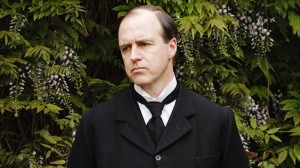
ASSIGNED READING: William Trevor’s “On the Streets” (Part 1 of 3)
In ASSIGNED READING, we’ll read something together — a story, novel excerpt, essay, play, poem — and talk about how and why it works.
Your Assigned Reading: William Trevor’s story “On the Streets”
Background: William Trevor is an Irish novelist and short story writer whose work appears a few times a year in The New Yorker, meaning most people haven’t read him. That’s not a dig at The New Yorker, and it’s not a dig at people. It’s just how it is. Take the number of people who buy The New Yorker, subtract the number of people who buy the magazine and who read short stories, then subtract from that amount the number of people who read every week’s short story. Now add the people who don’t read The New Yorker but do buy his short story collections, and then you’ll have the exact number of people who’ve read William Trevor. That exact number is: not most.
Alice Munro and George Saunders are probably the all-around best-known living short story writers right now. Next would be Jhumpa Lahiri, Lorrie Moore, Junot Diaz, Amy Bloom. (Stephen King, of course, outsells all of them, but I don’t know that anyone considers Stephen King primarily a short story writer.) Trevor is pretty far down the list, though a truly comprehensive collection of his stories would be around 2,000 pages long. (Really.) But he’s maybe one of the sharpest, weirdest writers we have, and I’ll explain why in the course of this three-part look at one of his stories, 2003’s “On the Streets.”
First, though, you have to read “On the Streets.” You didn’t read it yet, did you? Come on, it’ll take you fifteen, twenty minutes. I’ll wait. (I may sing.)
Danananana na na na Danana. DanananadaNA. American WOmaaan, don’t something soooomething. American WOmaaan, don’t hate on…
Oh, you’re back? Great. Then here’s today’s stuff about the writing (language, POV, etc.) in “On the Streets.” Tomorrow will be about the way Trevor reveals character and incident. And post #3 will be about what it all adds up to. If I’ve missed something, or if you think I’m full of shit, please say so in the comments.
POV/Voice/etc.
So, what was the first thing you noticed about “On the Streets”? The first thing I always notice is the close third person. This is the preferred third-person mode for a lot of modern fiction, but it’s always worth asking why the writer chose to go that way. Sometimes it’s just what’s more comfortable for the writer, but POV is less like what gauge strings a guitar player uses (personal choice) and more like which guitar he or she will use. A Fender Telecaster creates a very different listener experience than a Gibson SG. This is similar to the lenses a filmmaker will use; different lenses change what and how you see what’s in a frame. The choice of Point of View, at any given moment, is ultimately about what kind of experience a writer wants her reader to have.
(Note: I’ve covered POV here and here.)
In this case, it’s the fastest way for Trevor to get the character of Arthurs across to us. We’re right in this guy’s head and we didn’t ask to be. “When it came, the liver didn’t taste good. […] The bright green peas were more or less all right” is not William Trevor’s judgment, it’s Arthurs’.
Or maybe that’s the first thing you noticed, that we get only our character’s last name. That is not accidental.
The whole thing isn’t in close third person, by the way. Look at this section.
He could sense her exhaustion, and wondered if she’d talk about it, if a conversation might develop.
“Finishing soon?” he said when she brought the tea, speaking as if he knew her well, his tone suggesting that there’d been a past in their relationship, which there had not.
In the first part, that’s more third limited — we get the distancing phrases “he could sense,” and “[he] wondered” — but in the second I’d say that’s more a narrative voice than a personal voice. This is Trevor telling us something from an authorial point of view: “his tone suggesting…” etc.
And here, before we’re even off page one, we have some rules about how this story will go. It’ll feel free to enter its character’s head (or heads, as we’ll see), but it’ll pull back and give information or context when it needs to. It also, before too long, switches POV. There’s that line break after Arthurs asks awkward questions of his elderly waitress, and then we get “Mr. Warkely came in and said don’t start another batch or there’ll be a clog-up in the dispatch room.” Now we’re in Cheryl’s head. (Note that we also get her first name immediately.)
The Cheryl section sticks to Cheryl’s POV, along with Trevor’s interjections. In fact, the following paragraph starts with authorial details and then moves to Cheryl’s head on the line “There was no reason to hurry”:
She banged the door behind her and climbed the steps to the street, a thin, smallish woman, gray in her hair now, lines gathering around her eyes and lips. She had been pretty once and still retained more than a vestige of those looks at fifty-one. Shabby in a maroon coat that once she’d been delighted to own and now disliked, her high-heeled shoes uncomfortable, she hurried on the street. There was no reason to hurry. She knew there was not and yet she hurried, her way of walking it had become.
Arthurs appears midway through this section, though he isn’t named and their relationship isn’t author-verified until the very last line: “[…]she’d never begun to call herself Mrs. Arthurs.” Is Trevor being lazy? Or is he trying to be deliberately opaque or frustrating by not simply naming Arthurs and saying everything plainly? No! He’s doing character work. Arthurs is the guy Cheryl would prefer not to think about, so she and Trevor both avoid using his name. Moreover, she doesn’t have a lot of other people in her life (more on that in a moment), so it’s natural she’d think of him more as He, not Arthurs.
(By the way, if they ever make a short film of “On the Streets,” I hope they use Kevin Doyle, who plays Mr. Molesley on Downton Abbey, to play Arthurs.
Ten years before I ever saw his face on television, he was somehow already exactly who I was picturing.)
So what’s Cheryl and Arthurs’ deal? She seems to have married him out of practicality, but then left after five months: “the paint had still been fresh when she left, the carpet unstained; she’d never begun to call herself Mrs. Arthurs.” As it turns out, “On the Streets” is less the story of Arthurs and really the story of their “deal.” And that word, which I seem to have used casually, actually seems to be very appropriate.
Voice and Language
The other thing, and it goes hand in hand with the POV, is the voice of the story. Look at the odd syntax in these sentences:
The dullness Arthurs had mentioned in the café possessed him entirely now, an infection it almost felt like.
“Well, there’ll certainly be no charge for the coffee” Mr. Simoni’s immediate response was.
This is how Arthurs talks. Cheryl’s sections don’t have this quirk. That first sentence would have been pretty objective, authorial stuff, except for the turn it takes: an infection it almost felt like.
Cheryl’s sections remain almost authorial in voice, though we’re granted full access to her thoughts and feelings. This is for a few reasons:
- More than one quirky voice is a lot for a short story to accommodate.
- This is who Cheryl is in their relationship: the blank. She has thoughts and feelings, and they come through in her sections. But her role is to be the canvas for the gory scene Arthurs keeps painting over and over, with only slight variations.
- Finally, in a story like this, the reader needs an anchor. Arthurs is, as we come to learn, highly unreliable, and his version of things keeps creeping into the narration — again, he’s twisting even those seemingly basic, objective sentences.
The Details
The level of detail in this story is pretty astonishing. Welcome to William Trevor. Now: are there really a LOT of details, or is what’s there just extremely well chosen? This is, after all, a story about an especially obsessive man. (Albeit with ratty cuffs.) So the answer, I guess is both: there’s a lot and it’s all there for a reason.
Look at the first paragraph: Arthurs ORDERS liver and peas. On purpose! And then it’s gross, though he seems to have expected this. We later find out he’s eating his lunch at 3:30 in the afternoon. Why? Because it’s cheaper. Oh, and since childhood he’s followed people around ON THE STREETS (title alert) “to find out where they lived, to make a note of the address and add a few details that would remind him of the person.” And he’s asking weird, personal questions of his elderly waitress. All this in roughly two book pages of a story.
Later, when he’s drinking alone, we not only get “scummy froth,” which is a phrase I think of every time I see beer go into a glass, but we also have “He left his beer, pushing the glass away in case a sleeve caught it while he was putting his overcoat on.” Is he just being careful, or is he terrified of knocking over a glass and looking stupid in front of people? With Arthurs, they are the same thing.
Sometimes you’ll read something and think: Wow, this is a huge chunk of detail which I am now going to skip to the end of. That’s often because it feels like the author is trying to prove they notice things. Or they’re trying to make details add up to a character. Like when we get endless reports on what music a character is listening to, or the kinds of kitchen tools they use. Well, after college, music choices don’t equal a person. (This is why Bret Easton Ellis piles on these details in American Psycho.)
The details in “On the Streets” are never accidental, and they’re never superfluous. Instead, they work with what we already know of our two characters through their thoughts, dialogue, and actions. The details in “On the Streets” are so precise because details are all Arthurs has. His story of murdering the woman whose complaint got him demoted seems to change with every telling (we learn this by comparing his version with what Cheryl’s heard innumerable times), but they’re always full of details that seem too specific and benign to be false:
Someone called out for the Red Rover pub and the driver shouted back that the Red Rover had gone years ago. There was a traffic hold-up at Upper Richmond Road and he got off and walked a bit.
Then, of course, there’s the tattered, folded up paper with the words “Dear Sirs, An electric fire I purchased . . .”
Tomorrow: What does and doesn’t happen in “On the Streets.” Thanks for reading!
Photo Credit: Thomas Leuthard via Compfight cc



“A good ten minutes it was open before his hands were free to close it.” Brrrrrrrrr.